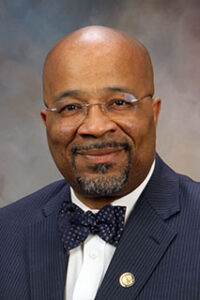 From a lifetime of watching police procedural shows on TV, most of us can recite a few lines of the Miranda warning even if we don’t know anything about it, how the warning came to be or why it’s called “Miranda.”
From a lifetime of watching police procedural shows on TV, most of us can recite a few lines of the Miranda warning even if we don’t know anything about it, how the warning came to be or why it’s called “Miranda.”
If you’re a little fuzzy, the warning reads roughly as follows, “You have the right to remain silent. Anything you say can be used against you in a court of law. You have the right to consult with an attorney during questioning. If you cannot afford a lawyer, one will be appointed for you before questioning if you wish. If you decide to answer questions without an attorney present, you have the right to stop at any time.”
The Miranda warning came about in the mid-1960s and it involved a man named Ernesto Miranda who was charged with the kidnapping and rape of a young women in Phoenix, Arizona, in 1963. Ernesto Miranda did not know his rights when he was taken into custody and police were not required to inform people of their rights. Police typed up a confession and had him sign it.
At trial, Miranda’s lawyer objected to allowing his confession into evidence, arguing that it had not been given completely voluntarily because Miranda was not informed of his rights. Ultimately this case made its way to the Supreme Court in what became known as Miranda v. Arizona.
As a result of Miranda v. Arizona, from the late ’60s on when someone was taken into custody and charged with a crime, they have the Miranda warning read to them so that presumably, they understand that they do not have to answer questions and that they have the right to legal counsel even if they can’t afford to hire an attorney.
For some people, Miranda warnings are just coddling criminals and being soft on crime. For others, especially those who have the full attention of the criminal justice system focused on them like a laser beam, being reminded of their rights and being given a chance to exercise them is the least that should be done in a society that values truth and justice.
But then we come to 2022 and Vega v. Tekoh. In 2014, an L.A County Sheriff’s Deputy named Carlos Vega responded to a call involving a hospital employee named Terence Tekoh who was accused of sexually assaulting a patient. He confessed to the crime, was tried, and acquitted. He then turned around and sued Carlos Vega claiming that Vega did not warn him of his right to remain silent.
This case also made its way up to the Supreme Court. The majority decision basically says that Miranda warnings are not rights protected under the Constitution and that an officer’s failure to “Mirandize” someone doesn’t violate anything. The majority decision used the word “prophylactic” to describe the Miranda warning.
A prophylactic prevents the spread of disease or infection. With that in mind, I’d like to think that the Miranda warning helps prevent the worst excesses of law enforcement by reminding people of their rights. In Vega v. Tekoh, I fear the court took five steps back.
I say that because it is precisely at the point of contact with the system that the individual, who’s presumed innocent until proven guilty, needs to be reminded of their rights and given every opportunity to exercise these rights.
It’s in those initial moments when people are filled with fear and anxiety and extremely vulnerable, that we need the Miranda warning because the weight of the criminal justice system is enormous and once the die is cast, the average individual with limited resources and few safeguards, gets crushed.

Going Back on Our Rights
If you’re a little fuzzy, the warning reads roughly as follows, “You have the right to remain silent. Anything you say can be used against you in a court of law. You have the right to consult with an attorney during questioning. If you cannot afford a lawyer, one will be appointed for you before questioning if you wish. If you decide to answer questions without an attorney present, you have the right to stop at any time.”
The Miranda warning came about in the mid-1960s and it involved a man named Ernesto Miranda who was charged with the kidnapping and rape of a young women in Phoenix, Arizona, in 1963. Ernesto Miranda did not know his rights when he was taken into custody and police were not required to inform people of their rights. Police typed up a confession and had him sign it.
At trial, Miranda’s lawyer objected to allowing his confession into evidence, arguing that it had not been given completely voluntarily because Miranda was not informed of his rights. Ultimately this case made its way to the Supreme Court in what became known as Miranda v. Arizona.
As a result of Miranda v. Arizona, from the late ’60s on when someone was taken into custody and charged with a crime, they have the Miranda warning read to them so that presumably, they understand that they do not have to answer questions and that they have the right to legal counsel even if they can’t afford to hire an attorney.
For some people, Miranda warnings are just coddling criminals and being soft on crime. For others, especially those who have the full attention of the criminal justice system focused on them like a laser beam, being reminded of their rights and being given a chance to exercise them is the least that should be done in a society that values truth and justice.
But then we come to 2022 and Vega v. Tekoh. In 2014, an L.A County Sheriff’s Deputy named Carlos Vega responded to a call involving a hospital employee named Terence Tekoh who was accused of sexually assaulting a patient. He confessed to the crime, was tried, and acquitted. He then turned around and sued Carlos Vega claiming that Vega did not warn him of his right to remain silent.
This case also made its way up to the Supreme Court. The majority decision basically says that Miranda warnings are not rights protected under the Constitution and that an officer’s failure to “Mirandize” someone doesn’t violate anything. The majority decision used the word “prophylactic” to describe the Miranda warning.
A prophylactic prevents the spread of disease or infection. With that in mind, I’d like to think that the Miranda warning helps prevent the worst excesses of law enforcement by reminding people of their rights. In Vega v. Tekoh, I fear the court took five steps back.
I say that because it is precisely at the point of contact with the system that the individual, who’s presumed innocent until proven guilty, needs to be reminded of their rights and given every opportunity to exercise these rights.
It’s in those initial moments when people are filled with fear and anxiety and extremely vulnerable, that we need the Miranda warning because the weight of the criminal justice system is enormous and once the die is cast, the average individual with limited resources and few safeguards, gets crushed.
Related Posts
Millville Woman’s Club Wraps Up Year with Community Service Projects
Giants Snap Nine-Game Skid in Raiders, Complicate Race for No. 1 Draft Pick
Jets Place Justin Fields on Injured Reserve, Ending His 2025 Season
Tate McRae Attends Jack Hughes’ Return Game as Devils Fall to Sabres
Newsletter
Be the first to know about our newest content, events, and announcements.
Mayoral Musings
Vineland Music Teacher and Deaf Dog Receive PETA Award
Vineland Police Department Promotes New Deputy Chief and Captain
Rotary Visits Spring Oak